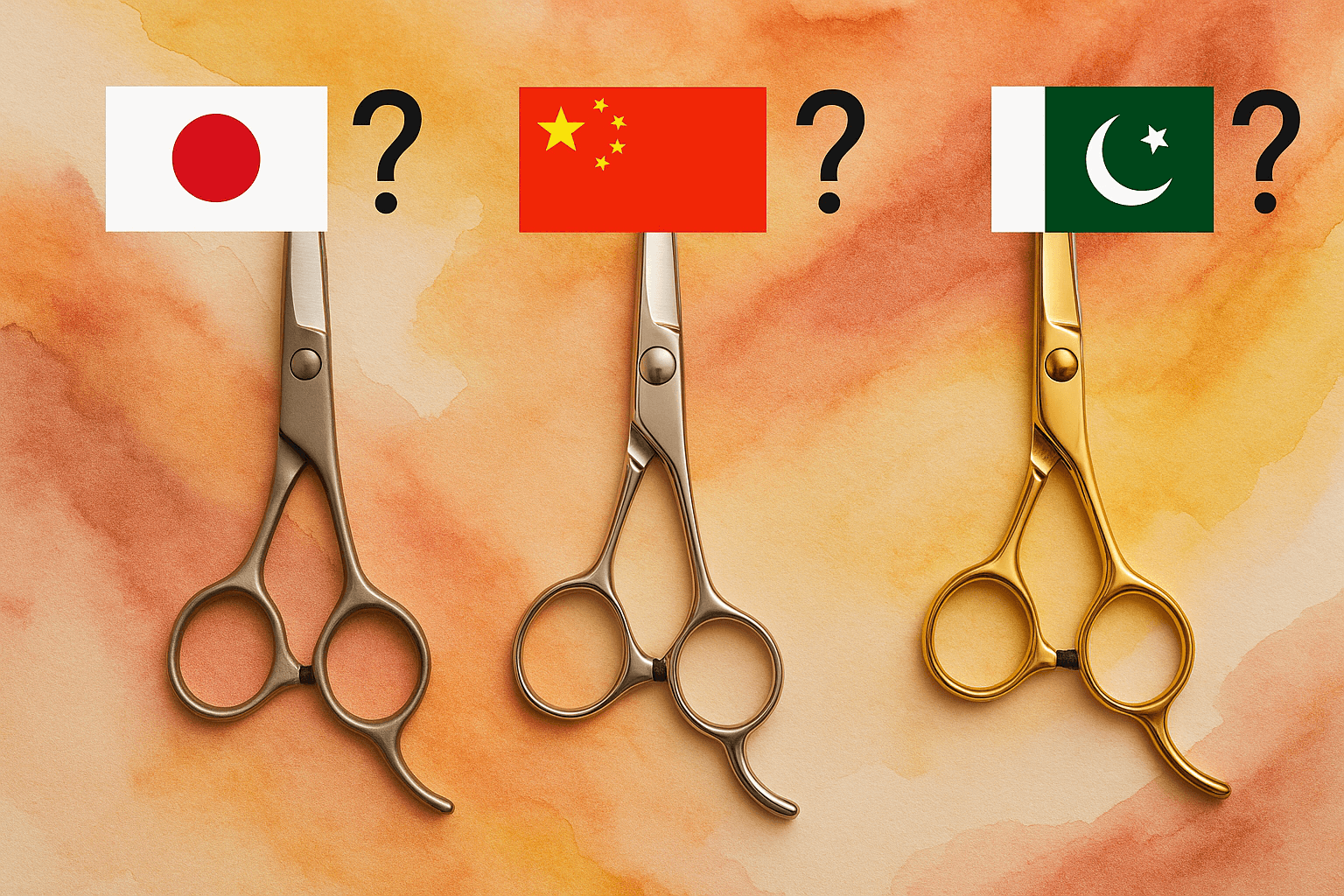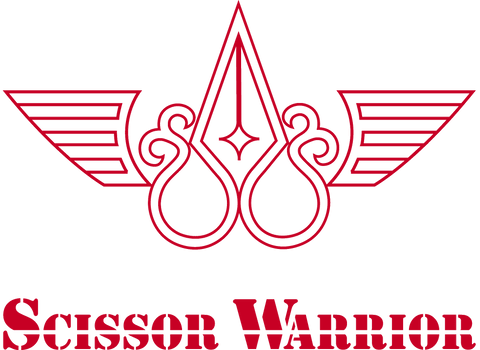How to Identify the Origin of Your Hair Cutting Shears

When shopping for professional hair cutting shears, many stylists and barbers wonder: Are these shears Japanese, Chinese, or Pakistani?
More importantly, how can you tell, and why does it matter?
Choosing the right scissors is critical for your craft, and understanding where your tools are made helps ensure you are investing in quality, precision, and longevity. Here’s a simple guide to help you navigate shear origins and make the best choice for your salon or barber shop.
1. Japanese Hair Shears: The Gold Standard
How to verify authenticity:
One quick and reliable way to check if your shears are genuinely made in Japan is by inspecting the "Country of Origin" marking.
U.S. federal law requires that all imported items must be clearly and permanently labeled with their country of origin, using phrasing like "Made in Japan."
⚠️ Be cautious: Just seeing terms like "Japanese steel" or "Japanese 440C" does not guarantee that the shear itself was made in Japan. These labels often refer only to the type of steel, not the craftsmanship or country of manufacture.

Why stylists love Japanese shears:
-
Exceptional sharpness
-
Superior steel quality
-
Long-lasting edge retention
-
Lightweight and ergonomic designs
Japanese scissors are a top choice for professionals looking for unparalleled performance in their hair cutting tools.
2. Pakistani Hair Shears: A Historical Perspective
Understanding the background:
Pakistan’s shear production traces back to the Vietnam War era. The U.S. military requested surgical tools from Pakistan, leading factories there to become highly skilled in crafting medical scissors.
After the war, many Pakistani manufacturers expanded into the beauty industry, using similar processes and materials, often based on 420-grade steel, which is softer than traditional hair shear steels.
Key points to know:
-
Surgical steel is great for skin and bandage scissors, but not ideal for cutting hair.
-
Pakistani shears can be difficult to sharpen properly using methods designed for Japanese or Korean shears.
-
Soft steel tends to lose its edge more quickly, leading to more frequent sharpening.
3. Chinese Hair Shears: Rapid Evolution
The manufacturing story:
Chinese factories learned beauty shear manufacturing techniques directly from Japan and Korea, leading to a different trajectory compared to Pakistan.
Current trends in Chinese shears:
-
Strong focus on innovative handle designs and aesthetics.
-
Ongoing improvements in production quality, although many experts note that Chinese shears still have room for growth compared to the craftsmanship and durability seen in Korean or Japanese shears.
Things to consider:
While Chinese hair shears are becoming more stylish and affordable, they may not yet match the cutting precision or long-term reliability of top-tier Japanese or Korean options.
Final Thoughts: Choosing the Best Shears for Your Craft
Whether you are a seasoned stylist, a master barber, or just starting out, investing in the right shears is a decision that shapes your work every day.
Understanding the country of origin gives you critical insights into the quality, performance, and maintenance needs of your tools.
Always look for clear labeling like "Made in Japan" when purchasing premium Japanese shears. Be cautious of ambiguous labels, and trust reputable brands and suppliers when shopping internationally.



